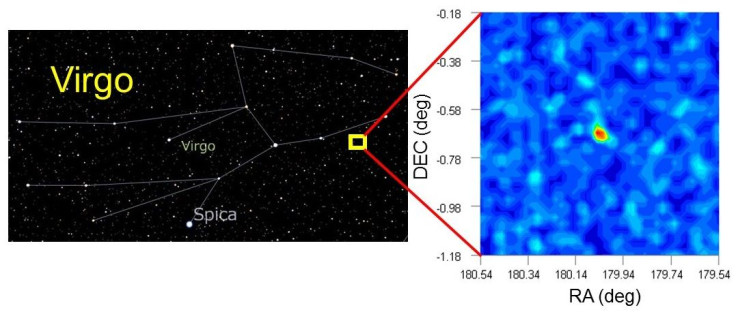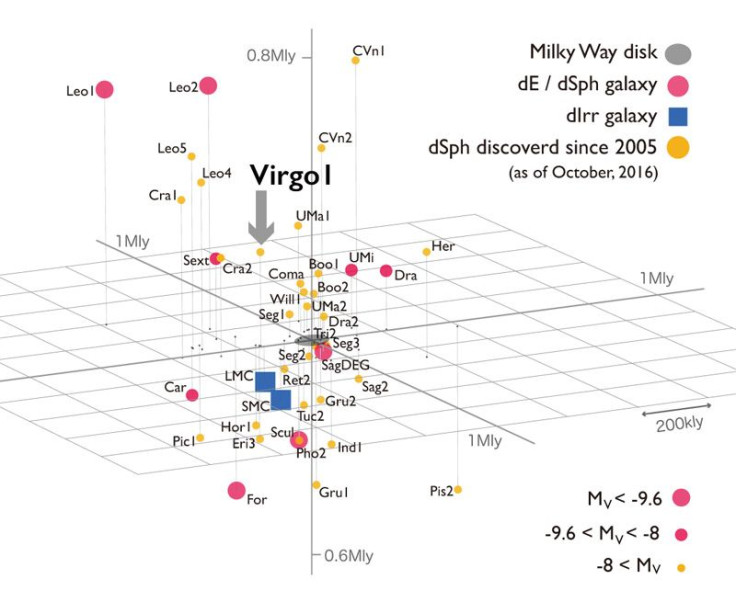Milky Way’s Faintest Companion Could Further Our Understanding Of Dark Matter

A team of astronomers has discovered the faintest dwarf satellite galaxy of the Milky Way. Virgo 1, discovered using the Subaru Telescope in Hawaii, has an absolute magnitude of -0.8 in the optical waveband — two orders of magnitude less than the Andromeda galaxy.
Absolute magnitude is the brightness of a celestial object as seen from a distance of 10 parsecs (32.6 light-years).
Before the discovery of Virgo 1, the faintest dwarf satellite found was Segue 1, which has an absolute magnitude of -1.5.

Scientists believe that studying the nature and composition of the dwarf galaxy, which lies at a distance of approximately 280,000 light-years from Earth and has a radius of roughly 124 light-years, may provide vital clues to what dark matter — the mysterious substance that makes up 85 percent of the universe’s mass — is.
As of now, very little is known about dark matter except that it consists of particles that release high-frequency gamma rays when they annihilate each other. Although the hypothesized Weakly Interacting Massive Particle (WIMP) is currently the leading candidate to explain the composition of dark matter, even the most powerful particle accelerators have so far failed to detect them.
A longstanding puzzle scientists seeking to study this exotic matter face is the missing satellites problem, which relates to how dark matter assembles itself into structures known as “dark halos.”
Our current theoretical models of galaxy formation suggest that a galaxy the size of Milky Way should be surrounded by hundreds of small dark matter halos, which, in turn, should lead to the formation of a comparable number of luminous satellite companions. However, so far, only 50 odd satellite galaxies to the Milky Way have been observed — a number that falls short of the theoretical prediction.

“This discovery implies hundreds of faint dwarf satellites waiting to be discovered in the halo of the Milky Way,” lead researcher Masashi Chiba from Tohoku University in Japan, said in a statement released Monday. “How many satellites are indeed there and what properties they have, will give us an important clue of understanding how the Milky Way formed and how dark matter contributed to it.”
© Copyright IBTimes 2024. All rights reserved.






















